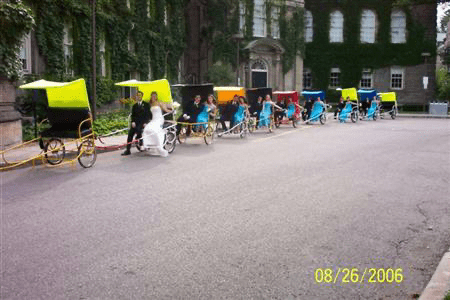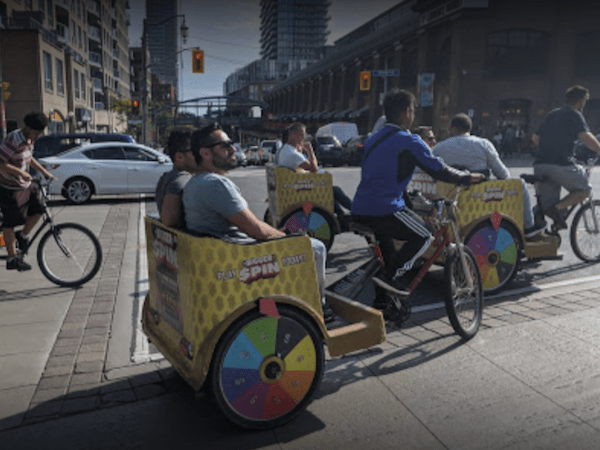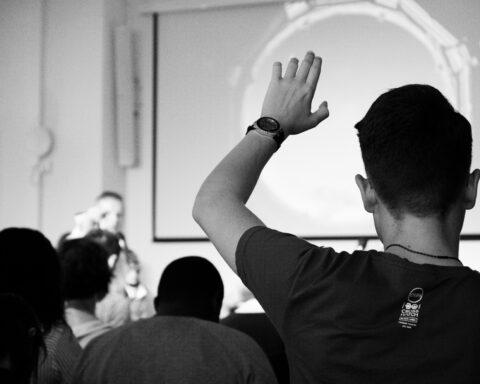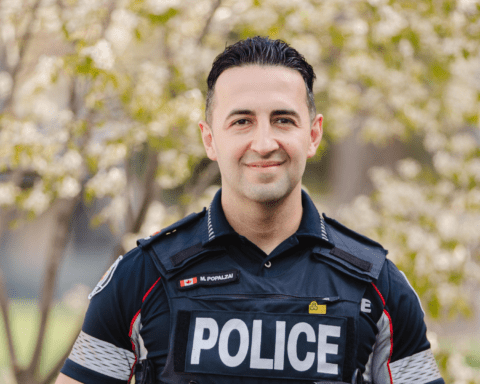For the land of the moose, maple syrup, and multi-billionaires with Lamborghinis and Porsches, a rickety, slow-speed contraption, the rickshaw, is a curiosity piece waiting by the sidewalk.
The rickshaw, with a mere presence of about 200 in the country, has earned a “respectable status” in Toronto’s transportation business over 30 years, according to Michael Langille. It is one of the surviving cultural emblems from Asia.
On the other side of the globe, hand-pulled rickshaws have transformed into three-wheeled motorized autorickshaws. With the advancement of technology, the e-Rickshaw is now in demand in world markets. In India, the home of autorickshaws, a single manufacturer distributes the three-wheelers in several countries with improved technology to cope with the needs of the emerging ‘Green Economy’.
For Indians and the Chinese, the rickshaw was the obvious choice for travelling short distances cheaply. Cambodia, Indonesia, Philippines, Thailand, El Salvador, Peru and Ethiopia also use the autorickshaw.
Chariots with drive
In Canada, rickshaws can be spotted in a few major cities. Ottawa ran a rickshaw service until it shut down during COVID-19.
There was hardly any business in the Byward market where a few tourists took rickshaw rides “just for the fun of it,” observed Jody Buggie, Member Services of the Byward Improvement Association. She was not sure the rickshaws would make a comeback here.
In Toronto, there has never been a dull moment, Langille, Director at Rickshaw Runners of Toronto, told NCM. He has been operating since 1999 and has established himself as Canada’s leading rickshaw service, ferrying passengers all year round.
“Our business has its highs, mostly event-based during the baseball season, or when passengers want to go to the Tulip festival,” he said. “We know the City, the ins and outs of what’s happening and where. Our passengers can sit back and leave it to us.”
Langille’s rickshaws help make an impressive entrance during opening ceremonies, product launches and parades. The rickshaws are decorated with lights and buntings and the road runners and peddlers go dressed in hats and T-shirts made to specifications. “Every rickshaw has its day,” Langille said. He has conducted Free Ride Marketing Programs with rickshaws in over 15 cities in the U.S. and Australia.

Langille’s rickshaws are imported whole and come complete with bells, collapsible hoods and gel cushions. His first piece came from China; the next lot came from India and then more from Japan.
At the age of 52, Langille, who began as a rickshaw puller and pedaller, said he was not the pioneer of rickshaws in Canada for he had seen “10 to 15” when he came to Toronto.
Romancing the rickshaw
Not many Canadians are aware of the presence of rickshaws in their cities. But there is a Canadian aficionado, who went to great lengths to bring one into Canada from India. Mathew Cay and his wife, a Canadian couple brought one along with them after their stay in India. This story goes back to 1979 and was published in India Today. This writer, then a cub reporter, wrote how Cay’s affair with the autorickshaw began when he landed in Bombay. He was on his way to Bangalore as a consultant to the Kudremukh Iron Ore project, overseen by Metchem in Montreal. It was love at first sight when he flagged an auto in Bombay before the Victoria Terminus railway station.
Cay acquired an auto through the South Indian Automobile Association within five weeks of his arrival in Bangalore. The price: a handsome Rs. 15,000. Now a member of the family, the auto was given a body and licence plate MER 2524 and dressed in finery before she got parked in Cay’s portico. He felt he owned a vehicle better than a Rolls Royce.
The reporter had hailed Cay’s auto, thinking it was for hire. Answering her directions, a foreign-accented voice responded, “Yes ma’am!” Startled she looked up to see a white man in the driver’s seat. They struck up a conversation and then after a few meetings, she got her story and rave reviews.
“I made the purchase 75 per cent for the novelty and 25 per cent for the utility,” Cay told the awe-struck reporter back then. “The auto has its advantages, no windows to roll up, and doors to lock, easy to park and manoeuvre in narrow lanes. No gas guzzling.”
Cay had to contend with the Indian system of right-hand driving. Initially, he disapproved of blowing the horn. Soon enough he gave up his polite ways and used the horn incessantly. He overtook other vehicles left and right.
MER 2524, despite its upscale looks, was often mistaken for a public carrier. A middle-aged lady was flabbergasted when he took her “by the shortest route” and when she asked “How much?” got a reply “Nothing, it’s my pleasure, ma’am.”
Coming from the land of flashy cars, Cay explained his sole purpose for buying the auto.
“Buy an orange-colored Cadillac in North America and no one gives a damn. There are so many of them, and not worth a second glance. But my autorickshaw! I stop at a traffic light, and they crane their necks and cast eyes!”
The reporter’s last memories were of Cay driving away into the horizon with MER 2524 emitting a bit of smoke.
Rickshaws may be period pieces. But they are a heritage to have and to hold.
Gita Abraham is a journalist of 45-year standing and has worked in national dallies and magazines in New Delhi including Hindustan Times and India Today. For 15 years she was the Feature Editor of The City TAB in Bangalore. She was also a Professor of Journalism, at the Asian College of Journalism in Chennai. Treading the thin line between fact and fiction, Gita has launched her debut novel “Daughter of the Blue Hills” early this year. She and her husband are snowbirds shuffling between Chennai and Ottawa. She has two daughters and two frisky grandsons who inhabit her world.





